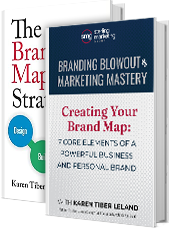Summary:
The article recounts the author’s experience of downsizing from a larger house to a rental property, reflecting on the emotional and practical challenges of shedding belongings accumulated over the years. It discusses the societal pressures of consumerism and advocates for a “sufficiency” mindset, aiming for a balance between excess and necessity. The author shares a method for decluttering called the “T scan” and emphasizes the importance of reassessing priorities and living more intentionally.
During the process, I sold off 10 pieces of furniture; donated over 200 books, assorted dishware and clothing for Goodwill; threw out a small dumpster’s worth of garbage and cut my candle collection in half. All of that and I still had many days worth of sorting and clutter clearing to go before the big day when we moved.
My husband and I were facing a downsizing. We sold the house we’d owned for the past 12 years and were moving to a rental. Were we forced to sell our house in a fit of foreclosure? No. But like many of our fellow citizens we were swept up in the irrational enthusiasm of leveraged real estate investments and a mortgage that looked liked it was too good to be true – and it was.
And while I now see that downsizing as a necessary step and nested opportunity – it had not been easy. Facing our fiscal choices and just confronting the amount of stuff (from houses to housewares) that we had bought, collected, been gifted, picked up at conferences, purchased at other people’s garage sales and one way or another acquired, had been painful at best and gut wrenching at worst.
Twenty years ago, I took a financial course where the instructor said the goal was sufficiency. I’ve often thought of this as the three bears method of money and stuff – not too much, not too little, but just enough to have a sense of freedom and things working well. I’ve never forgotten that concept. I only wish I’d made a little bit more of an effort to live by it over the past 10 years.
Even so, I can’t help but feel grateful. I know many people who have lost much more.
If you’re tempted to judge me too harshly as a disgraceful example of over-consumerism, I challenge you to open a few closets and drawers in your own home (or worse take a good hard look into the belly of the beast known as your garage) and tell me what you find. More than likely there will be an abundance of things you thought you wanted and needed but didn’t.
The pressure to buy now, pay later; stay on top of the latest trends and own what’s being touted as the next tony thing, is a strong one in our culture. It’s a problem facing our nation as a whole, not just a group of catalog crazy, sale enticed individuals. It’s a battle that takes constant personal vigilance to fight. One – if we stay on top of it – we can often win, and are bound by circumstances to occasionally lose.
Oh and just in case that trip to the garage inspired you to do a little rightsizing of your own stuff, here’s the method I used from my book Time Management In An Instant: 60 Ways to Make The Most of Your Day.
Do a ‘T’ scan
Moving in a logical direction (right to left, top to bottom, front to back) Scan the stuff in front of you and as you come across each item, assign it a category and act accordingly.
Trash – This is an item that no longer works, you no longer need or you no longer like. It has outlived its usefulness and is ready to make the journey from your office to the wastebasket. Action: Throw this out now! If the item is still in good working shape put it in a box to be given to charity.
Treasure – This is an item you need, you like and/or you use. It belongs exactly where it is. Action: Don’t do a thing. Leave it as it and be glad you found it.
Hot Hint: If the item is one you want, but just needs to be repaired, ask yourself if it’s worth the time and effort to fix this item or would it be better to replace it? If the answer is repair it, schedule a specific time to take care of it within the next week.
Transfer – This is an item that you want to keep, but does not belong in the location where you found it. Action: Put the item in a box for transfer to its proper place when the sorting session is over.
Temptation – This is an item that you feel conflicted over. Part of you wants to keep it and part of you is not sure you will ever use it. To help decide ask yourself:
Do I have more than one of these?
How useful will this really be in the future?
When was the last time I used this?
Is this something I need to keep for legal reasons?
What is the worst thing that could happen if I get rid of this?
This post was originally published at Karen Leland’s Featured Small Business column on The Huffington Post.
